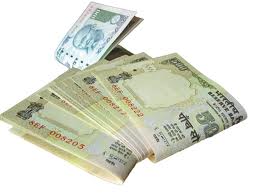Bengaluru, July 14: The Karnataka government has allowed some relaxations during the week-long lockdown in Bengaluru urban and rural districts. The lockdown will commence from 8p.m. today (July 14) and end at 5a.m. on July 22. The government has released the guidelines for lockdown.
Restrictions
*No new flights or trains will be permitted; only flights and trains already scheduled will continue to operate. Flight and train tickets shall serve as passes for movement by taxis/cab aggregators/auto rickshaws.
* Metro rail services prohibited
* Taxis and services of cab aggregators will be prohibited except for emergency and as permitted in guidelines.
* Schools, colleges, educational/training/coaching institutions etc. will remain closed. Online/distance learning shall continue to be permitted. Examination already scheduled shall be permitted
* Hotels, restaurants, and hospitality services, prohibited except those meant for health/police/government officials/healthcare workers. Hotels and restaurants shall be permitted to operate kitchens for takeaway/home delivery of food items only.
* All cinema halls, shopping malls, gymnasiums, sports complexes, stadia, swimming pools, entertainment parks, theatres, bars and auditoriums, assembly halls and similar places.
* All social/political/sports/entertainment/academic/cultural religious functions/other gatherings and large congregations.
* All religious places/places of worship shall be closed for public. Religious congregations are strictly prohibited. Commercial and private establishment shall be closed down
Relaxations (outside containment zone)
* Shops including ration shops (PDS), dealing with food, groceries, fruits and vegetables, etc. to open only from 5 am to 12 noon. Home delivery of essential items shall be encouraged.
* All facilities in the supply chain of essential goods, whether involved in manufacturing, wholesale or retail of such goods through local stores, large brick and mortar stores or e-commerce companies.
* All food processing and related industries.
* Banks, insurance offices and ATM.
* Print and electronic media.
* Telecommunication, internet services, broadcasting and cable services, IT and IT-enabled services with minimum staff for essential purposes. As far as possible, work from home should be encouraged.
* Delivery of essential items such as food, medicines, pharmaceuticals, medical equipment through e-commerce.
* Power generation, transmission and distribution units and services.
* Capital and debt market services and notified by the Securities and Exchange Board of India (Sebi)
* Cold storage and warehousing services.
* Private security services.
* Delivery of goods by E-Commerce companies. Industries/industrial establishments as listed below will be allowed to operate (outside containment zones):
i. Production units which require continuous process, and their supply chain.
ii. Food processing industries, manufacturing of essential goods, including drugs, pharmaceuticals, medical devices, their raw material and intermediates.
iii. Manufacturing of packing materials.
iv. Manufacturing and other industrial establishment with access control in Special Economic Zones (SEZs) or outside municipal limits and Export Oriented Units (EoUs), Industrial townships. Construction activities will be allowed in continuation of works in construction projects, where workers are available on site.









Comments
Wow, this paragraph iss good, my younger sister is analyzing these things, so I am going to tell
her.
My blg post; self storage rialto: http://home.loqal.no/~kennelp/arntgj/arntgj.php/,2014-04-1709:34:01,20
Add new comment